Digitalising Farming: Better Cotton Pakistan Project Aims to Standardise Field Data Collection
As the 2024 cotton season begins in Pakistan, Better Cotton is kicking off a new project to digitalise field data collection in the country.
Read moreAs the 2024 cotton season begins in Pakistan, Better Cotton is kicking off a new project to digitalise field data collection in the country.
Read moreThe farmers of Quarterway Cotton Growers – a Better Cotton Licensing Management Partner in the US – have been refining their use of regenerative agriculture techniques for the past 20 years.
They talked to us about what regenerative agriculture means to them and what they’ve learned through their experiences.
Read moreIn January, Better Cotton India organised its first ever residential leadership workshop for female field staff, with the aim of assessing gender influence and leadership, and examining how the organisation can enhance the overall experience of women in Better Cotton projects.
Read moreThis year, the annual Better Cotton Conference will be held online and in Istanbul, Türkiye – not just a cultural hub, but the largest city of a country with a rich history of cotton production and textile manufacturing.
Read moreThe release of Better Cotton’s 2023 India Impact Report has highlighted compelling results for the organisation as it strives to deepen its impact around the world. Here, we speak with Saleena Pookunju, Better Cotton’s Senior Programme Manager in India, to discuss those findings and the outlook for more sustainable cotton production in India and beyond.
Read more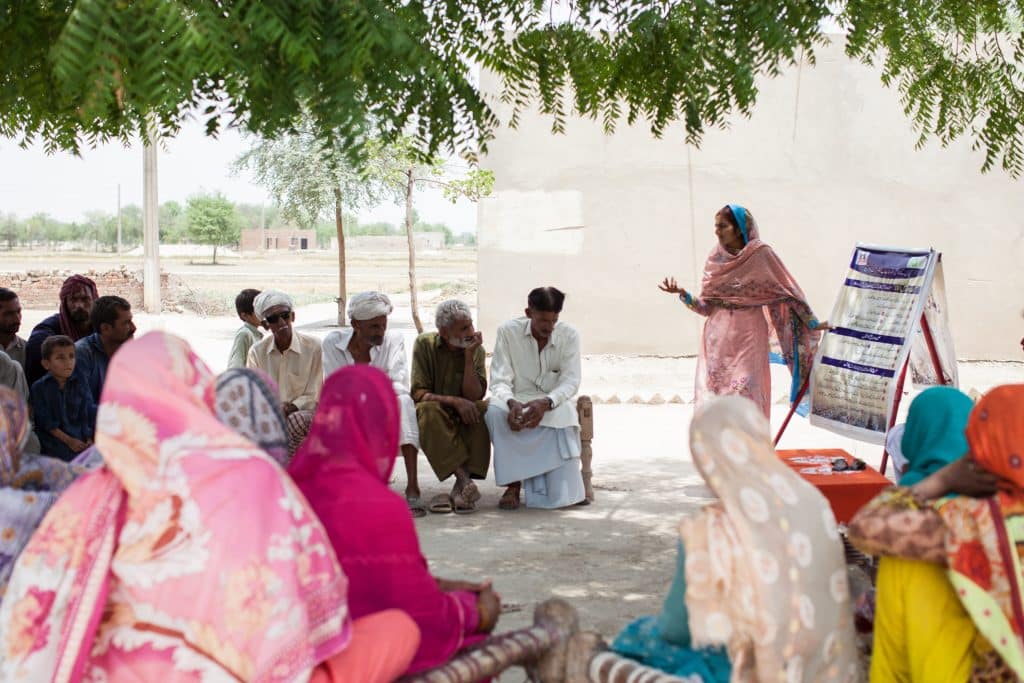

By Natalie Ernst, Farm Sustainability Standards Manager at Better Cotton


How does Better Cotton effectively implement a sustainability standard across two million individual licensed farmers? How can cotton farmers demonstrate progress in areas such as regenerative soil health practices, pesticide reduction, and decent work? How do we know that our field-level training is delivering positive changes?
The key factor that underpins the answer to all of these questions is an effective management system. This not only allows producers to plan and monitor progress, but also helps them to adjust their activities based on their learnings – a key tenet of Better Cotton’s focus on continuous improvement.
As we roll out Better Cotton’s revised Principles and Criteria for next season, this crucial concept of management systems is taking centre stage.
Under our system at Better Cotton, smallholder and medium cotton farmers are grouped into what we call ‘Producer Units’ (PUs) – groups of between 3,000 and 4,000 farms in smallholder contexts and 20-200 farms in a medium farm context – each with their own central management system and ‘Producer Unit Manager’, the person responsible for managing the PU.
These Producer Units are then further divided into smaller ‘Learning Groups’, each of which is supported by a Field Facilitator. Our Field Facilitators are the front line of Better Cotton at the field level – they carry out training, raise awareness of sustainable practices, visit farmers one-to-one, engage with local community leaders and institutions, and collect critical data on field practices.
When a Producer Unit is established, the staff’s first task is to set up an informed activity and monitoring plan. This plan should cover all areas of our Principles and Criteria, and take into account local priorities and the needs and aspirations of farming communities. Activities are then carried out and monitored according to this plan, and at the end of the season, the PU management and Field Facilitator come together to assess what worked, what didn’t work, and why. Based on these learnings, they can then re-adjust their next year’s activity and monitoring plans.
Our required management systems are comparable to the integrated management systems that companies across various sectors employ. Indeed, Large Farms are generally managed similarly to regular companies, and consequently our management requirements for the large farm context focus on whether a farm’s existing systems enable continuous improvement and learning. These systems should help large farms to track and address non-conformities with our standard, and enable monitoring of impacts on the environment and communities – within and outside their farm’s boundaries.
In April 2023, we announced the latest revision of our Principles and Criteria (P&C), our field-level standard, which was carried out in order to ensure that the P&C remains an effective tool to drive continuous improvement and deliver sustainability impact.
One of the key changes that we made as part of this revision was to make Management the first Principle in our P&C, recognising its critical function in driving and measuring progress across all areas.
With the updated document introducing new requirements, Producer Units will be asked to place greater focus on establishing relevant and inclusive activity plans and monitoring systems, and ensuring field data is analysed to inform future activities.
Beyond management systems, several other key changes are being introduced as part of the revised Management Principle:
We look forward to working closely with our Programme Partners to roll out the revised P&C next season and to continue investing in good approaches to support and monitor cotton farmers, and particularly smallholder farmers, at scale.
To find out more about the revision of our P&C, check out the other blogs in this series here.
Read more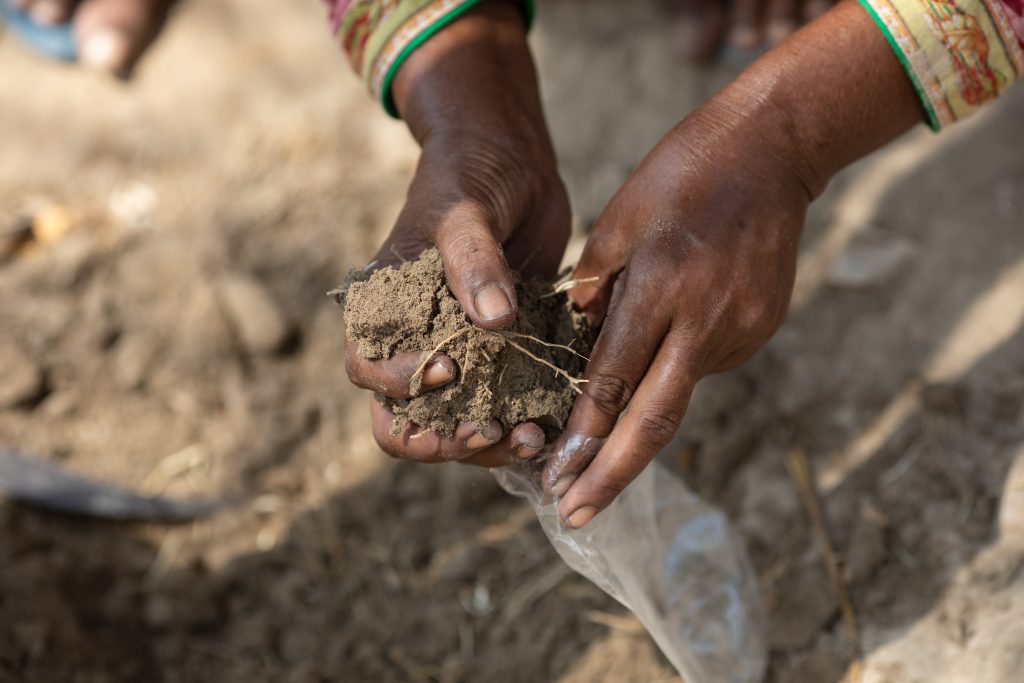

By Ashok Krishna, Sustainable Livelihoods Senior Coordinator at Better Cotton, and Heleen Bulckens, Senior Program Manager Materials at IDH


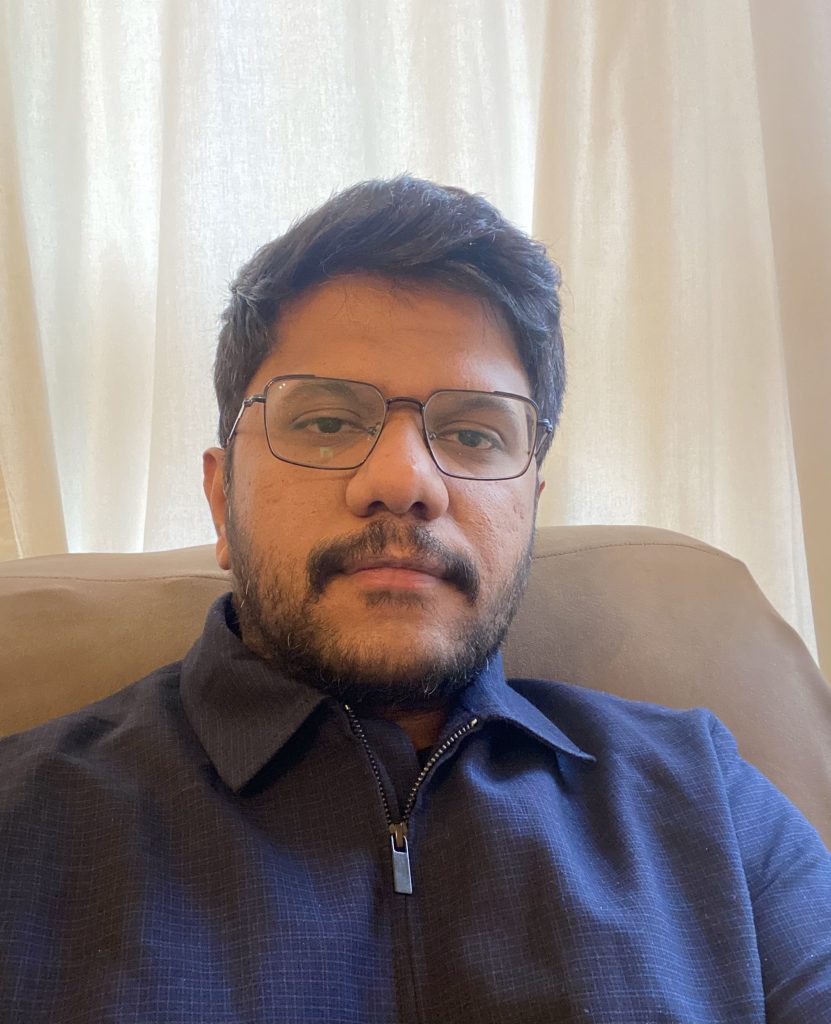

With proposed changes to the EU’s much-talked-about Corporate Sustainability Due Diligence Directive being debated, the livelihoods of millions of smallholder farmers could be on the edge of a significant change. The amendments in question would create a legal framework of accountability for EU-based companies, paving the way for smallholders to achieve a living income – a huge step towards creating better livelihoods for smallholders across industries, and particularly for the 90% of cotton farmers worldwide who grow cotton on less than two hectares of land.
Whether or not these landmark amendments are passed, the fact that they are up for discussion is already a sign of progress, as it recognises the role companies play in the socio-economic conditions of those that produce their products. This recognition comes amidst the often complex nature of supply chains where responsibilities are sometimes ambiguously defined.
Fortunately, this legislative trend supports the direction that Better Cotton is taking. Better Cotton has been doubling down on its commitment to sustainable livelihoods, looking at what more can be done within our own programme and through strategic partnerships with organisations such as IDH to improve the living standards of millions working in cotton.
In Better Cotton’s 2030 Strategy, we set a clear goal: to increase the net income and resilience of two million cotton smallholders and workers worldwide.
While Better Cotton works with farms of all sizes, in the context of our living income work, the focus is on smallholders due to their increased socio-economic and environmental vulnerability. These farmers often grapple with limited access to capital and are at greater risk of negative climate change impacts, which increases the risk of labour rights violations and practices such as child labour.
To drive progress towards Better Cotton’s 2030 target, we have added a dedicated Sustainable Livelihoods Principle to our revised standard, and we are also developing a comprehensive Sustainable Livelihoods Approach, due to be published in early 2024. This holistic approach will outline the exact steps Better Cotton will take to improve living standards for cotton farming communities and workers, hereby acknowledging that cotton farming systems encompass other crops that also require attention.
The approach outlines actions at three levels – farm, community and structural – and in three dimensions – production, purchasing practices and creating enabling environments. It will help us to unify our stakeholders, create a common language for what we mean by ‘sustainable livelihoods’, and ultimately, drive tangible change across the cotton sector.
Living Wage
A living wage is the required wage level for a worker to earn a sufficient salary to enable their family to afford a decent standard of living.
Living Income
Living income is the net income that a household needs to earn to enable all members of the household to afford a decent standard of living.
Beyond Living Income
For Better Cotton, living income is the first step towards a desired or prosperous income. This concept draws from IDH’s definition of ‘Better Income’, and encompasses higher income, stable income, and equitable income.
As we work towards realising our livelihoods goals, the partnership between Better Cotton and IDH has been instrumental. IDH recognises that farming should be a pathway to prosperity, not a struggle for survival. IDH collaborates closely with governments, businesses and local communities to promote sustainable value chains, and the organisation has created a Living Income Roadmap which guides companies on how to turn commitments into action. Better Cotton’s plan of action is based on this Roadmap. Better Cotton has also recently joined the IDH Living Income Business Action Committee which will allow us to exchange insights with initiatives in other sectors on living income strategies.
As part of our partnership, IDH and Better Cotton are identifying the living income gap for smallholder cotton farming households in two states in India (Maharashtra and Telangana) where Better Cotton is currently active. The project will also work to strengthen Better Cotton Programme Partners’ awareness of this topic through training.
Additionally, Better Cotton actively engages in the Living Income Community of Practice, an alliance of partners focused on improving smallholder incomes by increasing understanding of living income gaps and identifying strategies to close them.
Further, we foster dialogue among experts and stakeholders across the cotton supply chain. A recent highlight was the Better Cotton Conference in June 2023, which sparked vital conversations, ranging from yield enhancement to establishing financial support channels for farmers.
At Better Cotton and IDH, we recognise the intricate and long-term nature of our work to increase incomes and create sustainable livelihoods. While there is no ‘one-size-fits-all’ approach, collaborations like these help us to move the needle on this topic.
Yet these conversations are only truly effective if the brands and retailers and other value chain actors that are members of Better Cotton, the farming community, and other local stakeholders, such as governments, are involved. Each stakeholder needs to understand the role that they need to play in supporting closing income gaps. When everyone is at the table, we can pool resources, ideas and solutions and encourage joint investments that ultimately bring us closer to achieving living incomes for farmers around the world.
For more information on the steps that we are taking to achieve living incomes for cotton communities, keep an eye out for Better Cotton’s Sustainable Livelihoods Approach, which will be published in the coming months.
Read more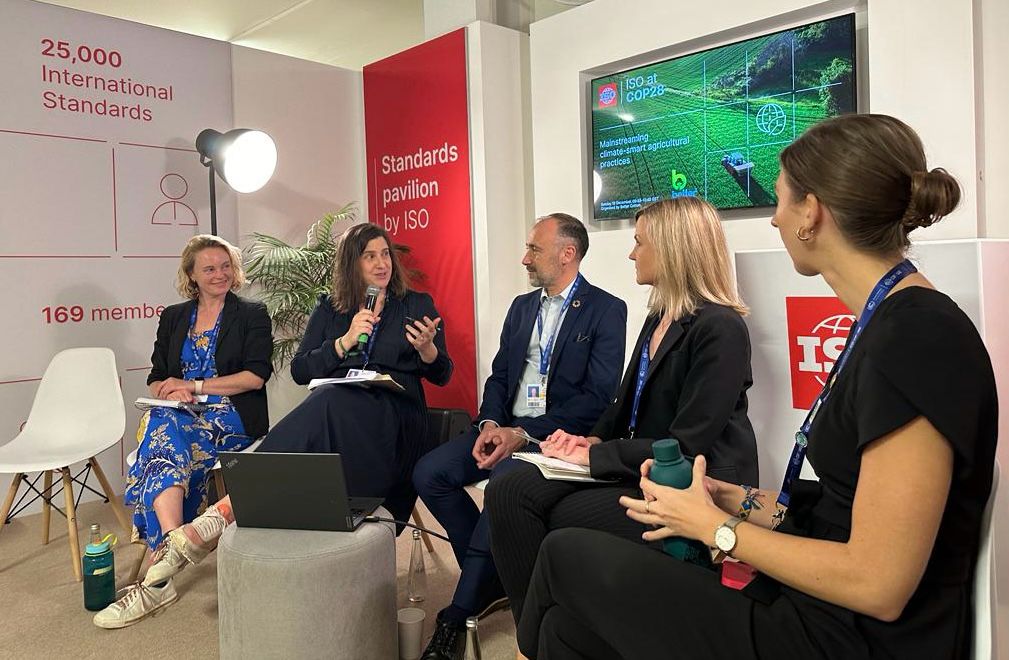

In late November, ahead of her trip to Dubai to represent Better Cotton at the 28th session of the UN Climate Change Conference of Parties (COP28), we spoke to Public Affairs Manager Lisa Ventura about our plans and objectives at the climate conference.
Now that COP28 has drawn to a close, we caught up again with Lisa to hear about her experience at the conference, the progress made, and her key takeaways.


For the first time, agriculture was a major focus at this year’s summit, with a full thematic day on 10 December. Given the contribution of agriculture to global emissions, this was a big step forward to finding solutions to climate change in a meaningful way.
Governments called for the implementation of multi-sectoral solutions on climate and agriculture, such as land use management, sustainable agriculture, resilient food systems, nature-based solutions and ecosystem-based approaches. Most importantly, they recognised that these innovative and sustainable agricultural practices create economic, social and environmental benefits, improved resilience and well-being in particular.
However, it is important to remain attentive to the focus given to food systems when COP and other climate discussions address agricultural topics. The active participation of organisations like Better Cotton is key to ensuring a balanced and integrated approach that takes into consideration all crops.
After a lot of back and forth, there is finally an agreement to transition ‘away from fossil fuels in energy systems, in a just, orderly and equitable manner’ to avert the worst effects of climate change. This transition from fossil fuels will impact every supply chain.
I’d also like to emphasise just how important COP has become for the sustainability ecosystem. All actors who wish to play their role in the future of our economic, social and environmental frameworks were present, and the Conference is driving the international agenda as a whole.
Farming communities around the world are already facing adverse impacts of climate change. Following droughts, crop yields are expected to fall significantly, resulting in diminished crop yields and overall livelihoods, and the recent floods in Pakistan and crop pests in India are just two of the recent examples of the issues impacting cotton farming.
Nevertheless, we must also bear in mind that cotton farming produces greenhouse gas emissions and that negotiations at COP are spearheading changes in agricultural systems towards more resilient and sustainable practices.
At COP28, delegates agreed to operationalise the Loss and Damage Fund, established last year at COP27, which aims to support especially vulnerable countries dealing with the effects of climate change. The decision taken in Dubai means that countries can start to pledge resources to it. This is a great starting point for the international community to find concrete means to support the livelihoods of many people, including farmers.
Firstly, I feel a sense of pride that Better Cotton has been admitted to the United Nations Framework Convention on Climate Change (UNFCCC) as an observer organisation. This means we can attend all future sessions of COP, take part in the negotiation processes and play an important role in the global efforts to combat climate change. It also reflects Better Cotton’s role in promoting sustainable development within the international community.
Climate change can only be addressed if is it addressed holistically. To that end, we shared our climate change approach across various sessions and throughout our engagement, as it is key for cotton farming to be seen as part of the solution. For example, we hosted a side-event on how to drive the adoption of climate-smart practices in global value chains.
From the speakers of this session to farmers I met at the conference (kudos to our colleagues at Fairtrade for facilitating the participation of a delegation of farmers), climate finance was brought up time and again as the biggest gap to scale those existing tools. Greater access to resources is the only way to truly enable climate resilience and enhance smallholder livelihoods while enabling a transition to farming systems that produce sustainable crops.
We have demonstrated our commitment to inclusive collaboration and transparency by signing the United Nations’ International Trade Centre’s (ITC) ambitious ‘Uniting Sustainable Actions’ initiative, which champions the work of small- and medium-sized enterprises (SMEs) in global supply chains.
Carbon markets were also at the heart of many discussions, but government representatives did not reach an agreement on carbon trading rules (Article 6 of the Paris Agreement). As Better Cotton is developing its own GHG accounting system, it was important for us to understand how international carbon market mechanisms are being developed.
Finally, considering the significant percentage of emissions emitted by the fashion industry, I was surprised not to see more stakeholders representing this industry. There were, of course, some discussions about decarbonisation of the supply chains, but it remained on the sidelines. Greater focus on this sector is needed at COP to turn ambitious commitments from retailers and brands into legislation and measurable progress.
Going forward, we already have many ideas on how to contribute to future COPs, and are already discussing new partnerships to mobilise stakeholders in the cotton industry during these important events.
Read more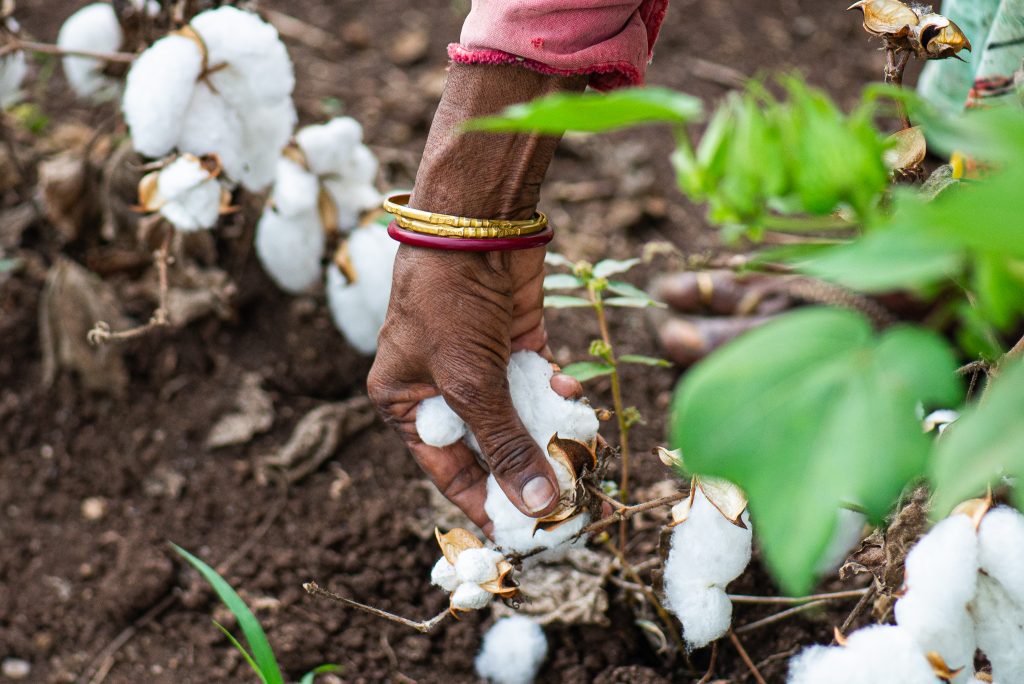

By Graham Bruford, Global Knowledge Manager at Better Cotton


Last week we held our annual Programme Partner Meeting over three days, offering a solution-oriented event for the front-line implementers of the Better Cotton Standard System. Bringing together 486 participants, a record for Better Cotton, the event gave our Programme Partners – who play a vital role in leading farmer training and support in the field – the opportunity to learn and interact with partners from other countries, technical experts and Better Cotton staff.
Across the three days, we held a variety of sessions aimed at providing useful technical material to support our partners in their implementation activities. With a packed agenda, the meeting covered a whole range of topics, centred around three key themes: climate and improved use of data; decent work and sustainable livelihoods; and implementation insights.
Evan Girvetz, Principal Scientist and Global Program Leader at the Alliance of Biodiversity International and CIAT, was our first keynote speaker, giving a highly insightful speech on Climate Smart Agriculture (CSA). Participants then got the chance to hear about farm data digitalisation, as well as learning about two climate change projects that we are working on together with external organisations and our Programme Partners.
On the second day, Joyce Poku-Marboah, Senior Project Manager, Child and Forced Labour at Rainforest Alliance, gave the keynote, drawing from her experience working with smallholder farmers in the cocoa sector to discuss improving livelihoods and promoting decent work. Again, we had a series of presentations from external organisations and Programme Partners which highlighted the different projects that are taking place across our programmes to drive Better Cotton’s work on decent work and sustainable livelihoods forwards.
Lastly, on the final day of the meeting we focused on implementation insights. Our Programme Partners had put forward four key challenges, and we came together to discuss these issues and explore potential solutions. The challenges discussed were:
During this last day, we provided a platform for partners to showcase their best practices to inspire future progress in continuously improving the implementation of the Better Cotton Principles and Criteria.
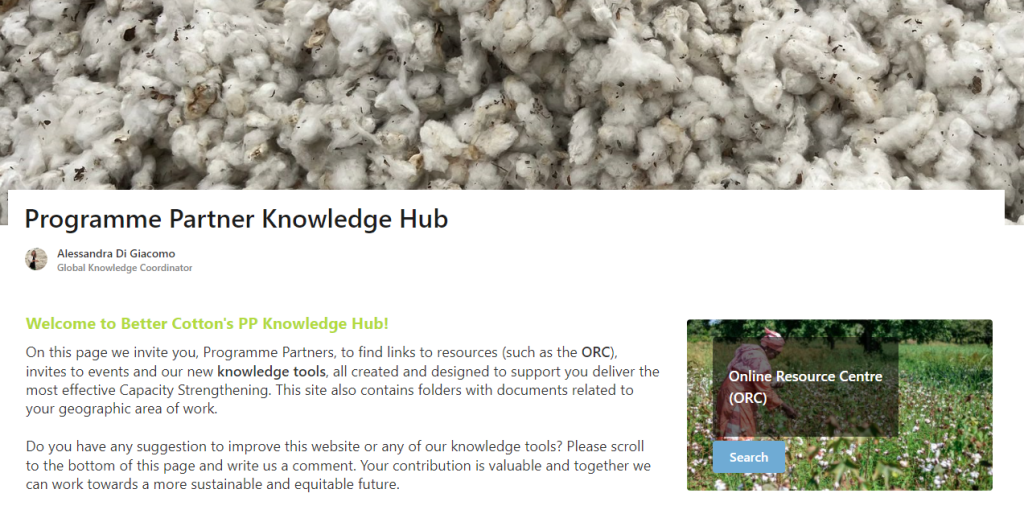

Several Partners from China, India, Mozambique and Pakistan submitted videos of their innovative practices working alongside Better Cotton Farmers, covering topics including establishing cotton nurseries to combat climate change; accessible innovations; wheat seed production in a cotton-wheat crop rotation area; cotton-mushroom crop rotation; compost creation and use; and alternative incomes for farm workers. Better Cotton also presented its own innovation, the Knowledge Hub, which was developed for Partners and Producer Unit Managers.
In addition, the day included spotlights on high-performing field staff from several different countries, demonstrating the hard work and commitment of Producer Unit Managers and Field Facilitators in training and supporting farmers to implement improved practices.
Better Cotton has a network of close to 60 Programme Partners across the world, each of which has their own team of Field Facilitators, Producer Unit Managers and other field staff who work directly with Better Cotton Farmers. In order to make the event accessible to as many field staff as possible, we provided interpretation in eight languages, a record for the organisation. This was a major success, particularly during breakout sessions, as it allowed participants to communicate and express themselves in their own languages without limitations. This resulted in a very enriching discussion, exchange of experiences and proposed solutions to the challenges raised.
The event was well-received and appreciated by participants, generating a lot of questions and interaction, and it was really helpful to have our partners explaining their learnings and experiences from their participation in the various projects discussed. We look forward to continuing to engage with our partners during our regular Programme Partner webinars over the coming year, and at the face-to-face meeting due to take place in early 2025.
Read more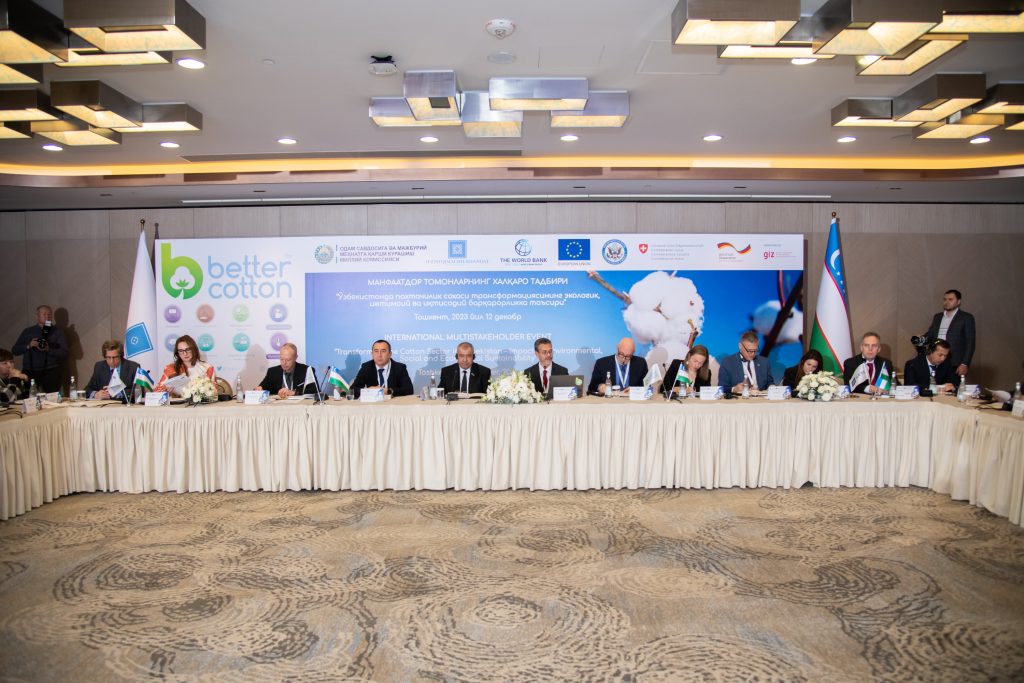

One year on since the launch of its programme in Uzbekistan, Better Cotton has co-hosted an event in its capital, Tashkent, to reflect on its successes and strengthen multistakeholder relations.
Held in collaboration with the National Commission of Combatting Human Trafficking and Forced Labour and the Uzbekistan Textile and Garment Industry Association, the organisation welcomed representatives from government, fashion retailers and brands, civil society NGOs, manufacturers, cotton producers, donors and knowledge partners.
The event, on 12 December, marked the end of a year in which Better Cotton has licensed its first clusters of farms in the country and launched a Roadmap of Sustainability Developments to unite influential stakeholders and advance the cotton sector’s sustainability credentials.
Speakers included Ilkhom Khaydarov, Chairman of the Uzbekistan Textile and Garment Industry Association, Marco Mantovanelli, Country Manager for Uzbekistan at the World Bank, and Joachim Fritz, Country Director for the German Agency for International Cooperation (GIZ).
The event explored four key themes: Sustainable Economic Development & Market Access, Regenerative Agriculture; Decent Work and Gender Equality; and Better Cotton’s Principles & Criteria V.3.0.
An Innovation Marketplace – in which stakeholders presented the latest tools and sustainable practices in cotton production – was held to drive discussion around effective solutions.
Our multistakeholder event in Tashkent was hugely successful in convening key stakeholders, reflecting on our journey to date and aligning on next steps. There is clear appetite for more sustainable agricultural practices in cotton, both at the farm-level and at the organisations we work with, and we’re committed to delivering this.
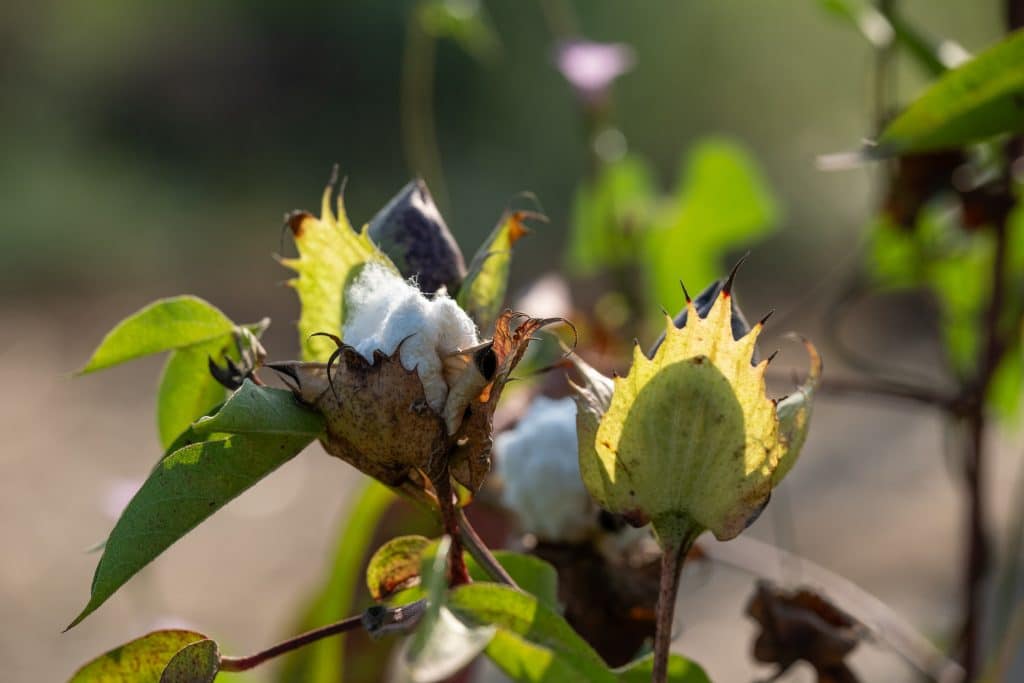

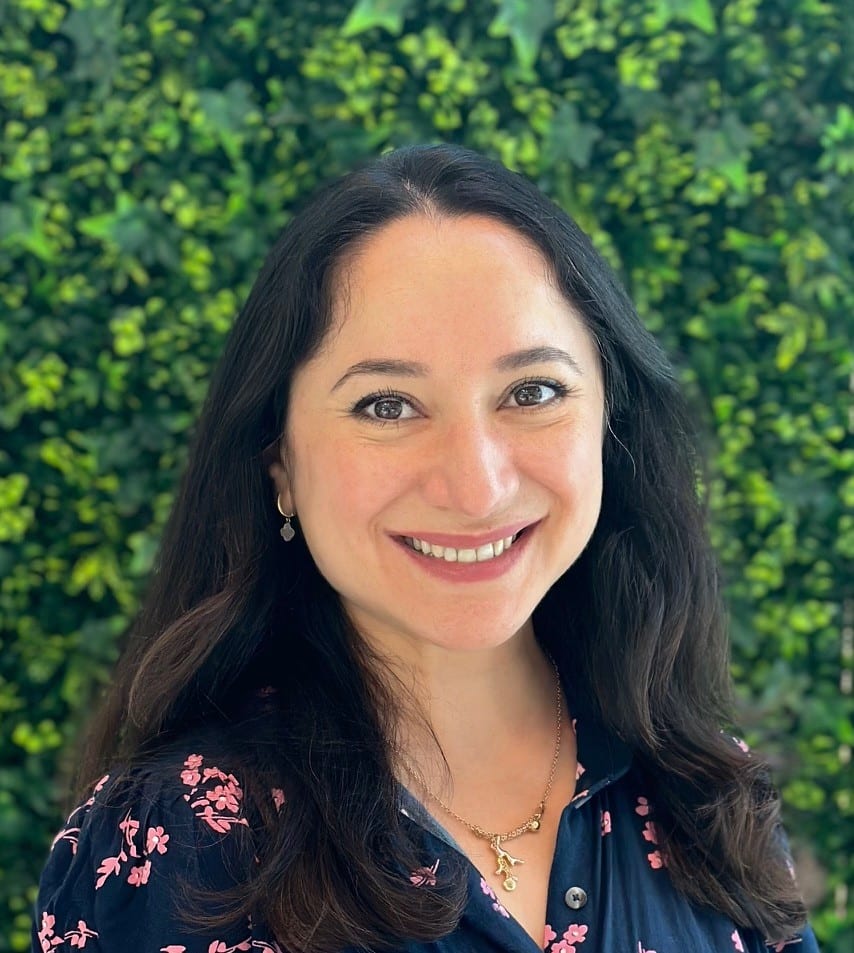

By Leyla Shamchiyeva, Senior Decent Work Manager at Better Cotton
At Better Cotton, one of the core elements of our standard is our Assurance Programme, which ensures that only farms that meet all the core requirements of our Principles and Criteria are able to sell licensed Better Cotton. Our assurance model is critical to ensuring that our Members can source Better Cotton with confidence.
Key to this model is robust monitoring to determine whether farms are complying with our requirements, and a recent monitoring initiative in Uzbekistan provides a great illustration of how our unique approach works to drive continuous improvement.
Once infamous for its labour issues, our programme in Uzbekistan is now a testament to the power of dedicated monitoring and a commitment to decent work. Let’s take a look at how Better Cotton contributed to the cause.
Uzbekistan’s historical struggles with state-sponsored forced and child labour in cotton production are well-documented, and this was a key focus as we set up our programme in the country. It is essential that we are able to verify that farms in the country are meeting our requirements around decent work, which are based on the International Labour Organization’s (ILO) fundamental principles and rights at work, including freedom from child, forced and compulsory labour.
To achieve this, we introduced enhanced decent work monitoring alongside our regular licensing assessment. This dual approach aimed to address the concerns lingering concerns about forced labour in Uzbekistan’s cotton sector and ensured that only fair labour practices were being implemented.
The recent monitoring initiative in Uzbekistan was a rigorous process. It involved semi-structured interviews with over 1,000 workers across 12 farms in 7 provinces, providing a diverse and in-depth perspective of the labour situation on the ground.
This process was not only about checking compliance but also understanding the everyday realities of the workers, their challenges, aspirations, and complaints.
The monitoring findings were illuminating – we found no evidence of systemic state-imposed forced labour or child labour. Our approach went beyond merely identifying labour violations, though. We explored a range of decent work issues, including fair pay, working conditions, and workers’ rights, ensuring a holistic assessment of labour practices.
Although it’s positive that forced labour and child labour have been successfully eradicated from Uzbekistan, Better Cotton’s goal is to also ensure there aren’t any other blind spots when it comes to labour rights.
When issues such as wage delays or health and safety concerns were identified, Better Cotton acted swiftly and minor issues were resolved through direct dialogue with farm management. We will ensure that farm workers continue to be compensated fairly through continued decent work monitoring. We envisage that this will initially be carried out annually, with a view to ultimately taking a risk-based approach, which will be triggered when we become aware of an emerging risk.
If found, more serious concerns would be escalated to the labour inspectorate. Better Cotton continues to endorse the ILO’s work to strengthen the capacities of the labour inspectorate, demonstrating our commitment to not just identify but actively address labour issues.
Our assurance approach in Uzbekistan is crucial for demonstrating the credibility of our system to the global market and to our Members. Coupled with the launch of our traceability solution, which enables our Members to track Traceable Better Cotton to the sourcing country, the robustness of our monitoring and the transparency of our processes provide confidence for those looking to source licensed Better Cotton from Uzbekistan.
This initiative, carried out in collaboration with the Uzbekistan government, works in unison with our sustainability roadmap for Uzbekistan.
The journey does not end here. We are continually refining our methods and expanding our reach to ensure that every cotton farm in Uzbekistan, and beyond, adheres to our high standards.
Better Cotton Members will have the chance to learn more about our programme in Uzbekistan at our upcoming meeting in Tashkent on December 12, which will convene a wide range of stakeholders, including international organisations, embassies, government, industry actors, civil society, human rights activists, and retailers and brands. This event will offer deeper insights into the transformative changes in Uzbekistan’s cotton sector and our future plans. Keep an eye out for more information about the outcomes of the event in the coming days.
Read more